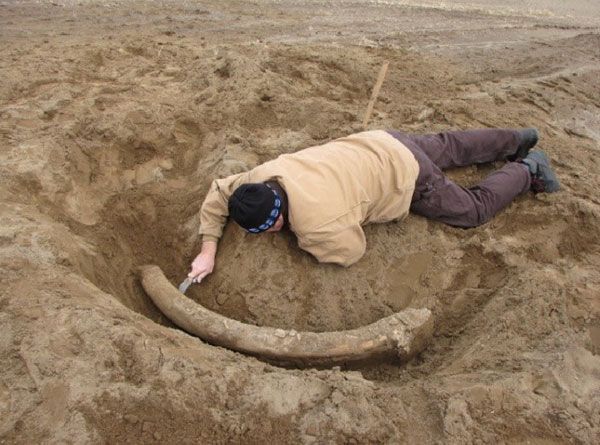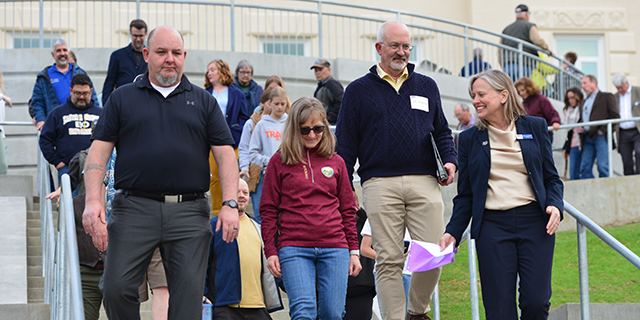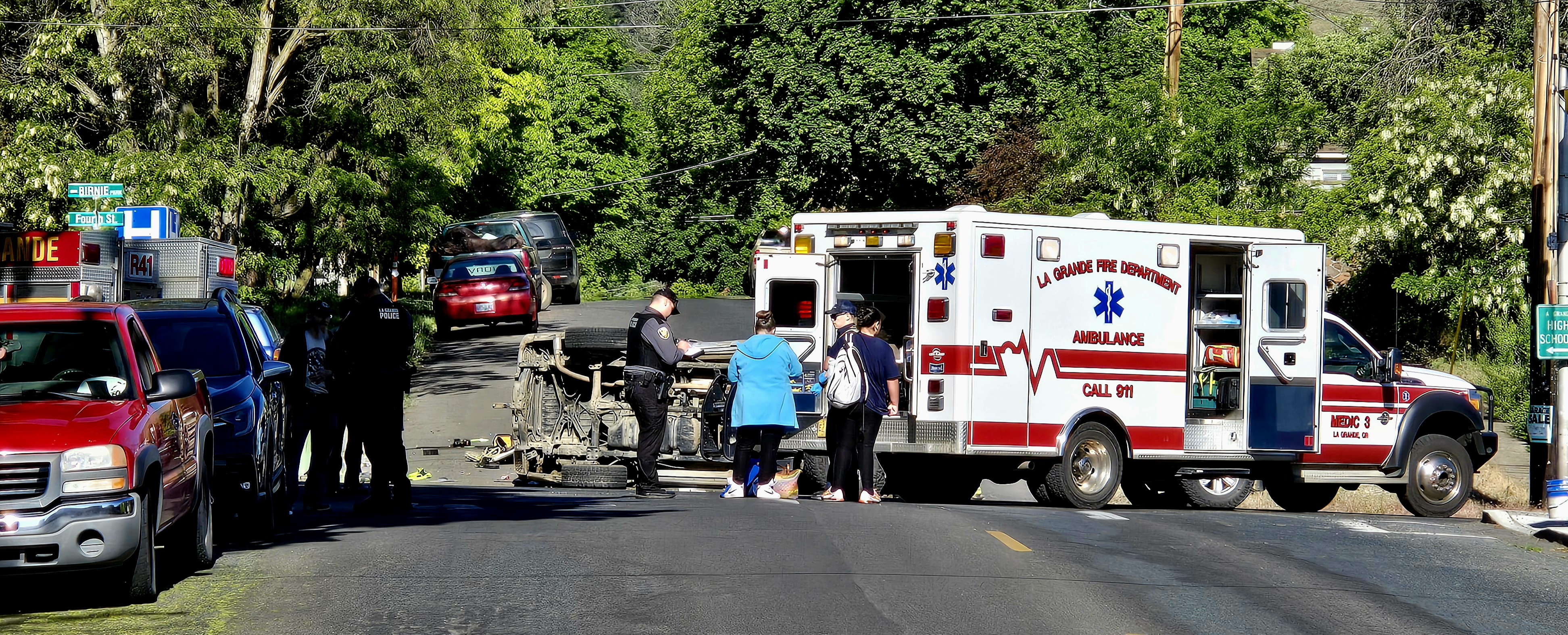Fossilized woolly mammoth bones unearthed in Grande Ronde Valley
Published 3:03 pm Wednesday, February 17, 2010

- Two woolly mammoth tusks were located Jan. 20 on farm land in the southern portion of the Grande Ronde Valley. The tusk being excavated is about 4 feet long. April Van Tassell photo
Woolly mammoth tusks have been uncovered in the Grande Ronde Valley.
The tusks and other animal bones were found during the excavation of local farm land Jan. 20.
“A heavy equipment operator working for a local construction company
was excavating about 15 feet below the original ground surface when he
noticed white in the brown sand,” said Professor Jay Van Tassell of
Eastern Oregon University’s Geology Department. “When he stopped to
investigate, he found a large white bone.”
The undisclosed site is in the southern portion of the valley.
A small piece of one mammoth tusk has been sent out for radiocarbon dating. Van Tassell and his peers estimate the fragment is 15,000 years old. Results should be back in a few weeks.
The construction crew attempted to safely remove the fossils from the area.
“The crew did the right thing by stopping the bulldozer and realizing this was important,” Van Tassell said.
The bones were taken to EOU where they were identified by Van Tassell as the tibia of an Ice Age mammoth.
“This is very exciting. I haven’t stopped bouncing since the discovery. This is a rare occurrence. We haven’t had such a discovery in more than 30 years in this area,” Van Tassell said.
Further investigation revealed two tusks, vertebrae and other bones in the ground.
“Construction was halted until an archaeologist from the Oregon Department of Natural Resources came to the site Jan. 23 to see if there were artifacts on the site,” said Van Tassell.
Artifacts or evidence of “early man” were not found during the investigation. The discovery of such a thing would have made the area an official geological dig site.
The tusks were transported to EOU on Jan. 26.
“During transport both tusks shattered. Only the tip of one and half of the other remain intact,” said Van Tassell.
“Based on the curvature of the mammoth tusks, Dr. William N. Orr, curator of the Thomas Condon Museum of Paleontology at the University of Oregon, has confirmed that the tusks belong to a mammoth.
The small size suggests that the mammoth was a juvenile. Dr. H. Gregory McDonald of the National Park Service in Denver has tentatively identified the vertebrae and proximal end of a femur that were found at the site as the bones of a giant short-faced bear (Arctodus simus),” Van Tassell said.
Short-faced bears were larger, faster and more aggressive than the living bears today. Scientists think they were ferocious predators that could kill mammoths, giant sloths and the elusive saber-toothed tigers.
A tiny skull and bones of a small rodent were also discovered near the mammoth. Van Tassell and EOU Biology Professor Laura Mahrt have identified these fossils as the remains of an ancient ground squirrel.
Van Tassell and his students say there could have been several scenarios at the point these creatures perished thousands of years ago.
“One idea is the mammoth and the bear could have been fighting or it could have been a watering hole where animals congregated or through time a river could have drifted the bones together,” Van Tassell said, adding that the ground squirrel could have burrowed down at some point.
“It’s hard to know if there are more fossils in that area. If it was a watering hole at the time, there could be hundreds of mammoths in that area,” Van Tassell said.
Although no one will likely ever know, Van Tassell said he is excited to have these fossils to study with his students.
“It’s important for us to know that not too long ago, at least in geologist time, that these creatures were roaming this area during the Ice Age,” he said. “It’s like puzzle pieces to a picture of the past.”
The owner of the property has donated the fossils to the geology program at Eastern Oregon University and has requested that the location of the site be kept confidential.
Van Tassell and his students, with the help of EOU Biology Professor Joe Corsini whose research focuses on fossil turtles, will be working to preserve the fossils with hardener and gluing the broken fossils back together.”
“Now it’s time to chip, chip, brush, brush,” Van Tassell said.
EOU Biology Professor John Rinehart and his students are investigating the possibility of sequencing the mammoth’s DNA.
This is not the first time that Ice Age fossils have been found in the Grande Ronde Valley.
“In 1964 the skull and bones of a giant ground sloth (Mylodon harlani) were discovered in a gravel quarry
along Foothill Road south of La Grande,” said Van Tassell, citing a story in the Nov. 17, 1964, Observer. “Fossils of the mammoth Mammuthus washingtonii, including the upper end of a femur, a humerus and teeth, have been discovered at the old hospital site on the north side of La Grande and in 1979 two mammoth teeth were excavated near the home plate of the old EOU baseball field. One of these teeth was radiocarbon-dated at 15,280-plus 180 years.”
Van Tassell noted the importance of the public notifying the EOU Geology Department of fossil discoveries. He said the department would be happy to investigate.





